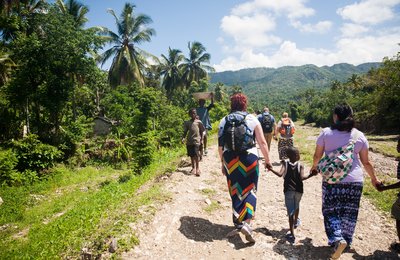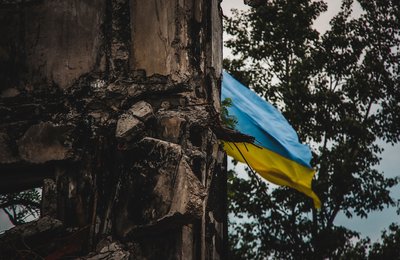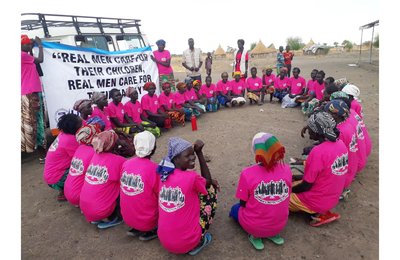Peacebuilder perspectives: Is the war the only way to end Myanmar’s internal conflict?
Minn Nhu explores the complicated question facing peacebuilders in Myanmar: is war the only way to end internal conflict, or does peaceful dialogue still hold hope?

On 1 February 2021, Myanmar experienced a military coup, causing its progressive democracy to backslide. Since then, revolutionary efforts including armed conflict have occured between the military government, known as the State Administration Council (SAC), and the revolutionary resistance organisations (EROs).
The revolution hopes to restore peace and democracy and end the authoritarian regime once and for all. This is not the first revolution in Myanmar, here were two successful coups in 1962 for direct military rule and 1974 for constitutional dictatorship. Multiple peace efforts were made over the years but failed, including the 21st Century Panglong Conference.
Nowadays, the revolution has led to a contentious debate about the most effective way to end the conflict. While some advocate for armed revolution, others still believe in the potential of peaceful dialogue between the military government and the resistance. In this article I will explore different perspectives of peacebuilders and civilians involved in the conflict.
Is there hope for dialogue?
Every day, when I read the news, I feel unhappy with reports concerning armed conflicts and their consequences.
It is not because we are losing – in fact, the revolution has achieved significant success in gaining territory, with People’s Defense Forces (PDFs) and EROs reportedly in control of 60-70% of the country. It is because I witness devastation: thousands of deaths, burning villages, forced displacements, forced rape, sexual violence, arbitrary arrests, torture, the death penalty and economic downturns amid civil war. This violence amounts to war crimes and crimes against humanity, according to Network for Human Rights Documentation - Burma.
As of 25 June 2024, 5,336 people have been killed, 26,912 arrested, 20,631 detained, 167 given death penalties, with 735 children arrested and 675 children killed by the military government, according to the Assistance Association for Political Prisoners. The numbers are increasing every day. With these daily rising numbers and tragic cases, I began to wonder if war is the only way to end the conflict or whether there should be room for peaceful talks. So, I asked local peacebuilding individuals, civilians and organisations the same question to understand their positions on conflict resolution in this context.
Mrat Pann is a peacebuilder currently working in Arakan revolutionary youth group to support Arakan communities in the revolution. She said that for her, armed revolution is one way to end the conflict because the SAC itself does not want peace and seized the power from democratically elected government. But, at the same time, peaceful dialogue should still be an option to prevent total destruction of ethnic communities.
Peaceful dialogue has not been an option since the coup, with armed revolution assumed to be the only effective way to end the conflict.
Current news shows the military targeting remote and rural ethnic villages, burning houses and entire villages, and mass killing. Mrat Pann and Mi Tala believe that when the resistance gains greater control of most townships, there may be an opportunity for peaceful dialogue with the military to bar total damage to ethnic communities.
Mrat Pann added, “Peaceful dialogue may still be an option to end the conflict, but in doing so, we must not forget seeking transitional justice for ethnic minorities such as Karenni, Karen, Mon and Rohingyas. We must hold all perpetrators accountable for their crimes during the conflict.”

"we cannot turn back anymore"
Tin Shwe, a 25-year-old gay peace activist, argued there is always a price for peace. The Myanmar people have chosen a war as a means to restore peace, and he is ready for the price. He does not want a similar fate for his future children and generations, and his generation must be the last to suffer. He believes that war is the only way to end the conflict, and that as this is the third coup it cannot fail like the others.
Mg Than, another gay peacebuilder working in a revolution-related organisation, agreed: “From my perspective, peaceful dialogue is not an option anymore and war is the only way to end the dictatorship and restore peace because past peaceful negotiations never worked”.
Saw Hla, a 40-year-old civilian from Karen State, said “I think we do not have any other ways to end current conflict except war because our revolution has reached this far, and we must go on. My son is already dead from the revolution, and we cannot turn back anymore. Our goal to end the military regime and restore peace and democracy is getting closer and closer.”
Mi Tala, a Mon-ethnic woman peacebuilder, is presently working in a revolutionary organisation and providing necessary funds and support towards EROs. She said that peaceful dialogue should still be an option. She believes it could prevent more genocide and human rights violations against ethnic minority groups, because there are still some remote areas out of the revolution’s reach and at high risk of violence from the military. Like Mrat Pan, she stressed that transitional justice measures must be implemented either as a condition of peaceful dialogue or after the revolution wins in order to hold perpetrators accountable for their crimes and seek justice and reparation for victims in the case of peaceful dialogue or after the revolution wins.
Together, these different perspectives convey the complexities of the conflict, which has no easy solution. While the armed revolution has made significant gains, the call for peaceful dialogue with transitional justice remains strong. The path to peace and to end the conflict may require a combination of both options, acknowledging sacrifices made while striving for a peaceful future.
From my perspective, the pathway forward now depends largely on the armed resistance winning. The military will not give up and has already gone too far, and if the SAC is defeated, peace is to be restored in the country. Or we must wait and see for the reaction of EROs if the SAC initiates peaceful dialogue efforts in the future.
Disclaimer
The views and opinions expressed in this article are those of the interviewees. They do not necessarily reflect the perspective of the whole population and relevant parties in Myanmar. Based on these interviews, a discussion is made for informational purposes only.
The names of interviewees, their organisations and the author have been changed and are used as pseudonyms for security and privacy concerns.







